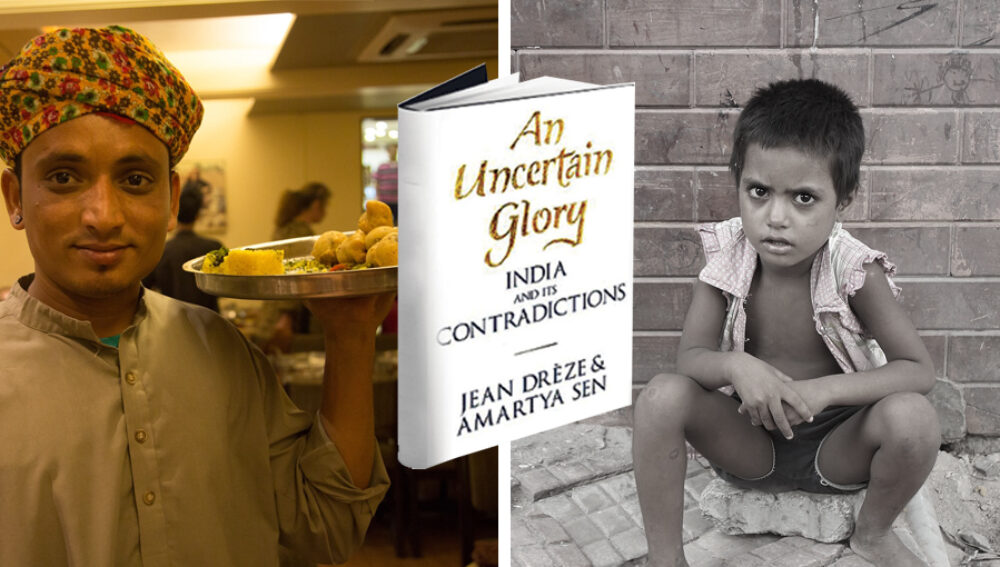In 2013, Nobel Laureate Amartya Sen and his co-author Jean Dreze published their treatise on India’s ‘uncertain glory’. They acknowledged that the ‘…picture of a new and dramatically changed India is both accurate and important’. Yet, they are keen to ensure that one is not seduced by the ‘…increasingly used rhetoric which suggests that India is well on its way to becoming an economic power’. This, they claim, ‘…is far from the real picture’. They then proceed to devote a section of their book in documenting ‘India’s decline in South Asia’.
Well, where does one begin? The authors believe that ‘…the comparison between Bangladesh and India is a good place to start’. There is a certain irony in making such a comparison because of the nature of the Bangladesh-India relationship. As London School of Economics Professor David Lewis puts it:
‘Since the Liberation War of 1971, when India’s intervention made Bangladesh’s secession from Pakistan possible, relations have been characterised by periodic tension and distrust. Bangladeshis have developed something of a love-hate relationship with India: grateful for its support in 1971 and mindful of a common culture and shared history, but resentful of the ways that India throws its weight around as the regional superpower.’
Sen and Dreze note that, although in terms of per capita income, India is significantly richer than Bangladesh, ‘…(it) has overtaken India in terms of a wide range of basic social indicators’ (italics in original). For example, in 1990, India’s per capita GDP (in purchasing power parity terms) was 1.3 times that of Bangladesh. By 2010 that gap has widen to 1.6.
Has the Sen-Dreze thesis withstood the test of time? Has the really rapid growth of the mid-2000s in India reversed its unflattering comparison with Bangladesh? Sen and Dreze derive their conclusions by drawing on data from the World Bank’s ‘world development indicators’. Their latest data is of 2011 vintage. I use information from the latest available year (2016). To start with, the income gap persists, with India’s per capita now 1.7 times higher than Bangladesh. Yet, it still remains true that Bangladesh does better than India in terms of a broad array of social indictors as recorded in 2016. Indian life expectancy was recorded as 68 years, while in Bangladesh, it turned out to be 72 years. Infant mortality (in terms of 1000 live births) was 38 in Bangladesh vis-à-vis 48 in India. Access to improved sanitation facilities (% of the population) was 61 in Bangladesh, while it was a strikingly low 40 in India.
There is one specific indicator of lack of sanitation facilities that has attracted attention in recent years and has been the source of much anguish and embarrassment in India. This pertains to the act of ‘open defecation’ where men and women, both and young old, respond to the call of nature in open spaces. It is well known that open defecation poses a major public health risk. India has the unenviable distinction of being way behind Bangladesh in this regard. While the latter is poised to eliminate open defecation entirely – an achievement that has occurred within the space of ten years – more than 500 million (or about 38 per cent of the population) still engages in open defecation in India. Not surprisingly, eliminating open defecation by 2019, the year that coincides with the 150th anniversary of Gandhi’s birth, is one of the primary goals of the current government’s Swachh Bharat Abhiyan movement in India. The latter, it seems, has a lot to learn from Bangladesh in this particular sphere of public health, so claims both a leading global periodical and a leading Indian daily.The Sen-Dreze thesis of India’s ‘uncertain glory’ appears to be vindicated, at least in terms of an aspiring economic power being a laggard in terms of social indicators, despite rapid growth and rising income. Certainly, ‘growth matters’, but it is not the only thing that matters.
This article was written by Griffith Asia Institute Adjunct Professor Iyanatul (Yan) Islam.








